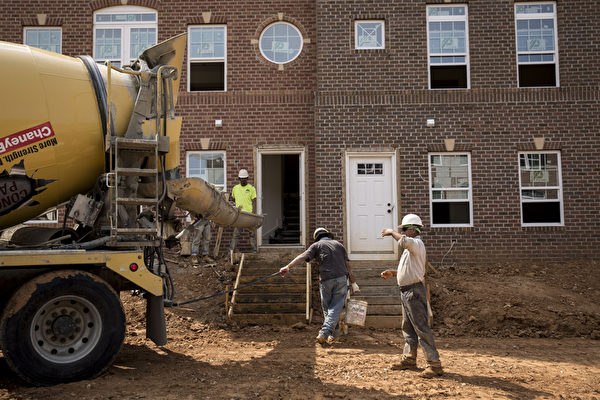In the United States, the housing construction sector has seen its best year since the global financial crisis, but rental prices and home values continue to rise, exacerbating the situation every year.
A recent report from real estate company Zillow revealed that from 2022 to 2024, the number of new homes constructed by builders in the United States has reached record highs since the financial crisis. However, this has not been enough to alleviate the housing shortage in the country.
Zillow’s analysis found that due to the population growth rate outpacing housing supply, the shortage of housing units in the United States reached 4.5 million in 2022, up from 4.3 million in 2021.
Economists believe that the housing shortage will lead to a series of economic challenges, such as rising rents and home prices, which are among the more noticeable effects. The housing shortage can also decrease efficiency in the job market, as employees find it difficult to relocate for suitable employment opportunities.
Zillow’s senior economist, Orphe Divounguy, stated that the key to addressing the skyrocketing prices and rents is to increase housing supply. He likened the current situation to being stuck in a hole and emphasized the need to break through the status quo to overcome it.
Zillow calculates the housing gap by measuring the number of people living with non-relatives against the available rental or purchase properties. There are 8.09 million people living with non-relatives, with only 3.55 million existing residential units available for rent or sale, resulting in a gap of 4.5 million units.
While builders have ramped up housing construction efforts, challenges such as rising labor and construction material costs have made operations difficult for them. Additionally, many economists and politicians believe that zoning laws that segregate land use for commercial and residential purposes have restricted new housing construction. New York City Mayor Eric Adams has proposed amendments to these regulations.
Specifically, in 2022, builders constructed 1.4 million housing units, the highest number of new homes built since 2007. However, with 1.8 million new households formed by Americans in 2022, the 1.4 million homes fell short of meeting the demand. Although an additional 1.45 million housing units were constructed in 2023, the supply still could not keep up with the increasing demand. A significant acceleration in housing supply is necessary to make a substantial impact in the market.
Zillow indicates that even if the U.S. population growth were to plateau, the severe housing shortage from previous years leaves the current increase in new housing units far from meeting public demand.
In 2022, over 8 million people wanted to establish households, but only 3.5 million housing units were available for rent or sale. That year, the U.S. housing vacancy rate dropped to 2.5%, the lowest point in decades.
Regions with the highest influx of new residents in the U.S. are facing the most severe housing shortages, such as Austin in Texas, Seattle, Boston, Sacramento, Portland, San Diego, San Francisco, San Jose, Minneapolis, and Los Angeles. These cities are also typically located in areas with the strictest building regulations in the country.
The housing shortage has driven prices and rents to new heights. According to an analysis by Harvard’s Joint Center for Housing Studies, in 2022, 50% of renting households were burdened, with rent exceeding 30% of their income, and half of them were paying more than 50% of their income on rent.
To alleviate these pressures, the construction industry requires policy support, such as relaxing land use zoning regulations as mentioned earlier. Other measures include reducing parking space requirements, expediting the issuance of building permits, and supporting housing trust funds.

